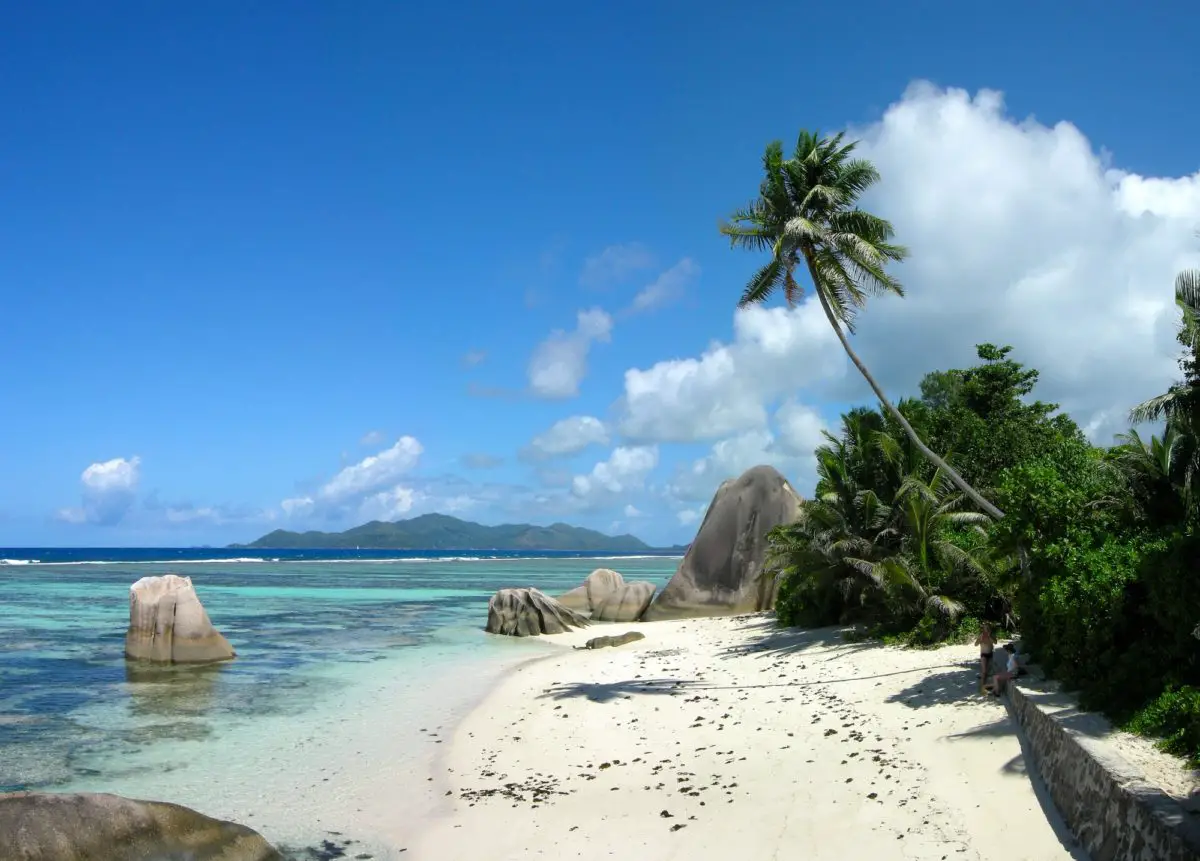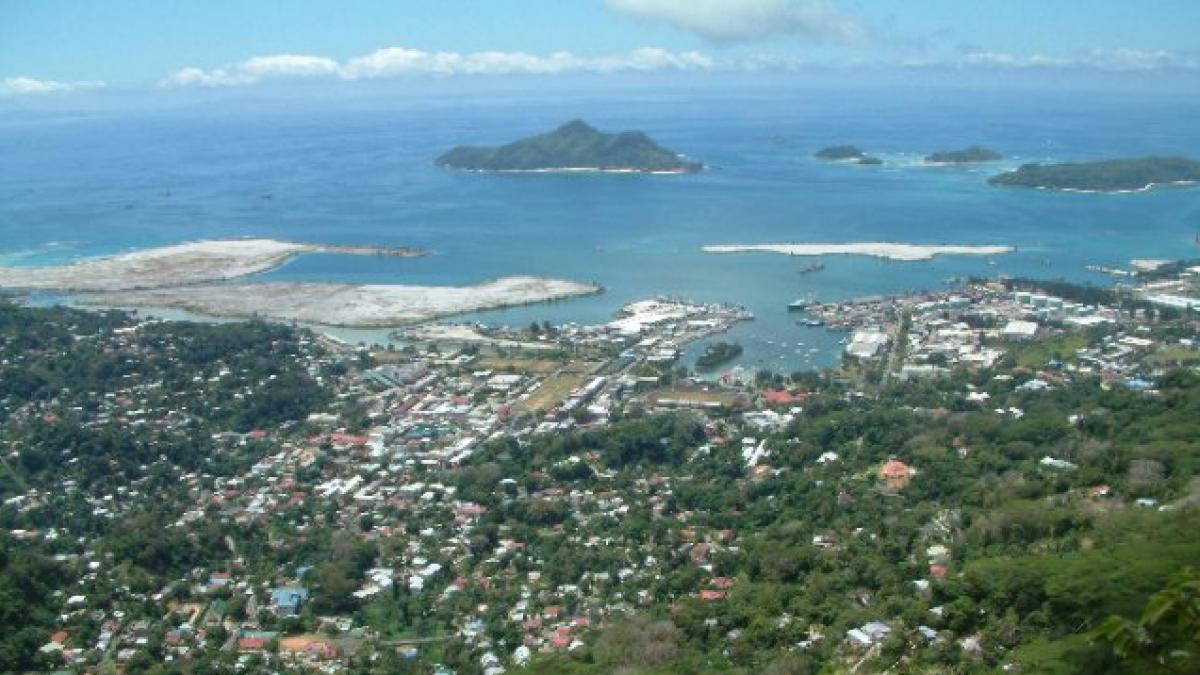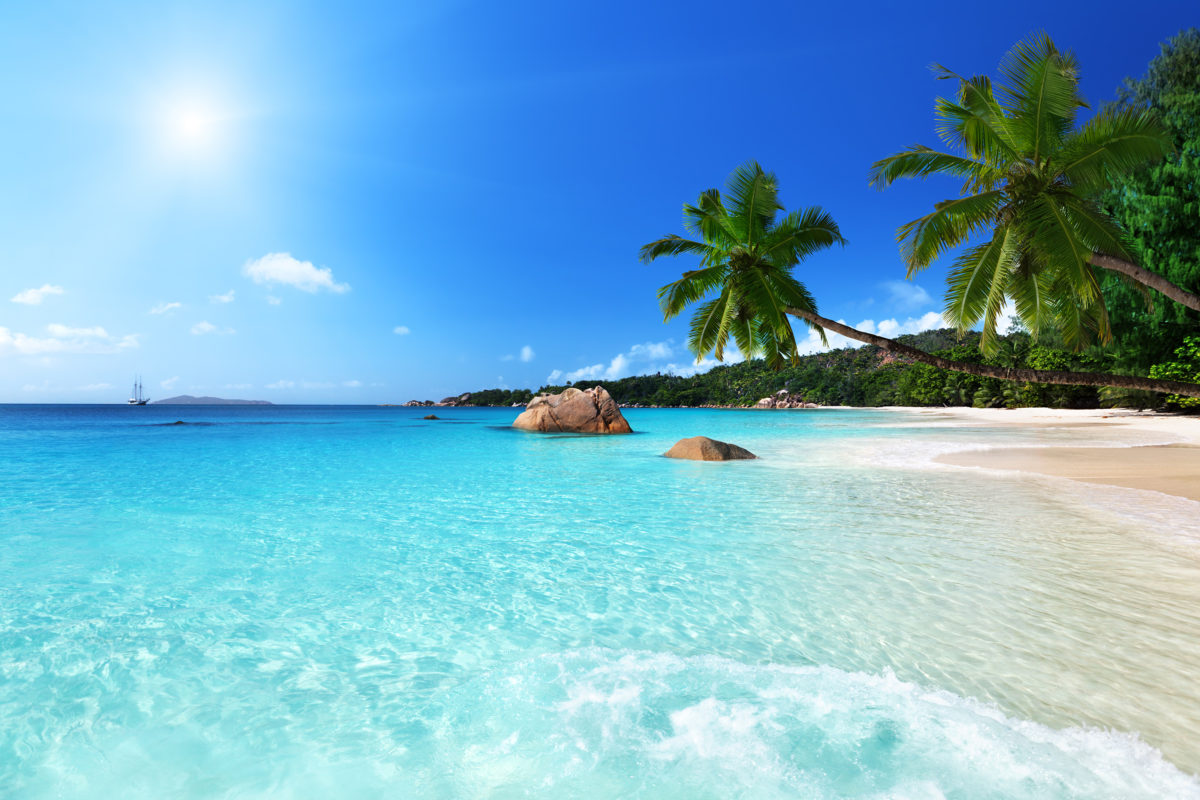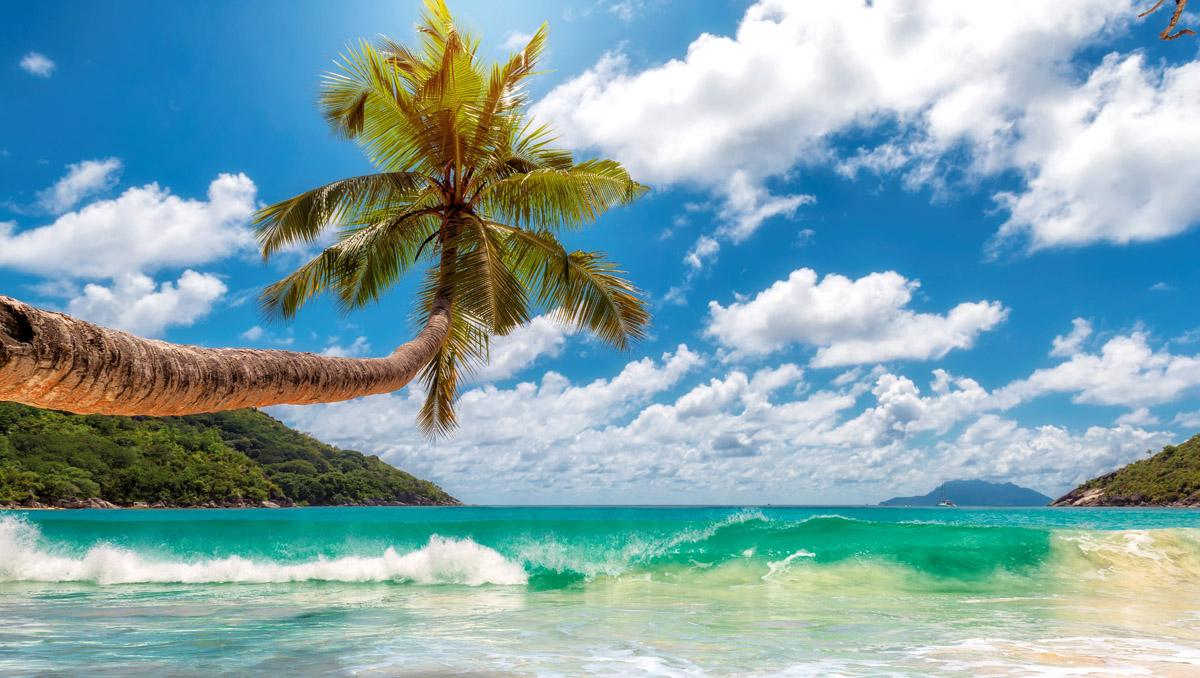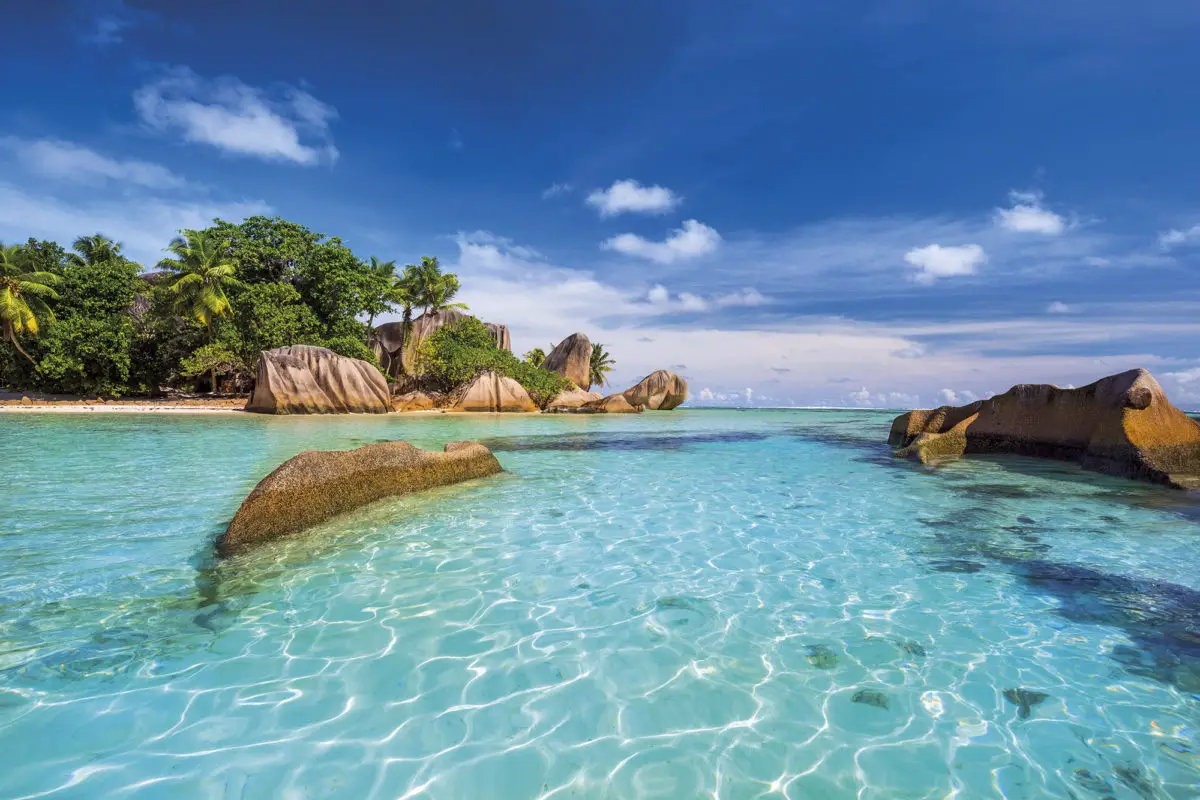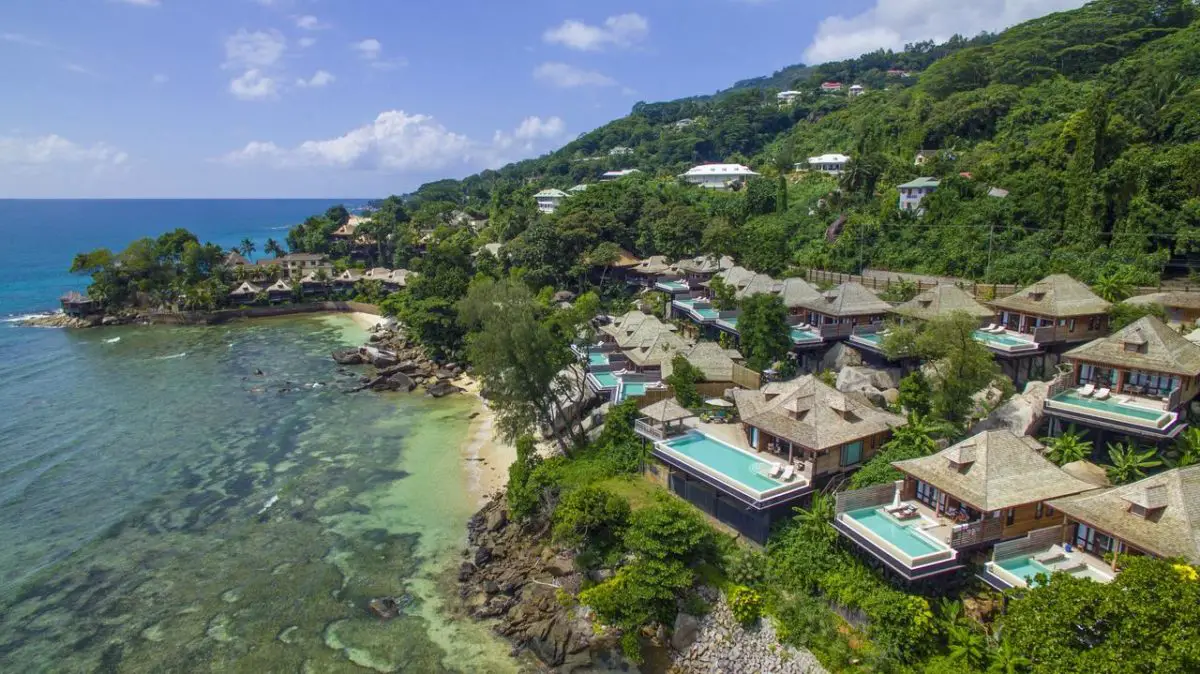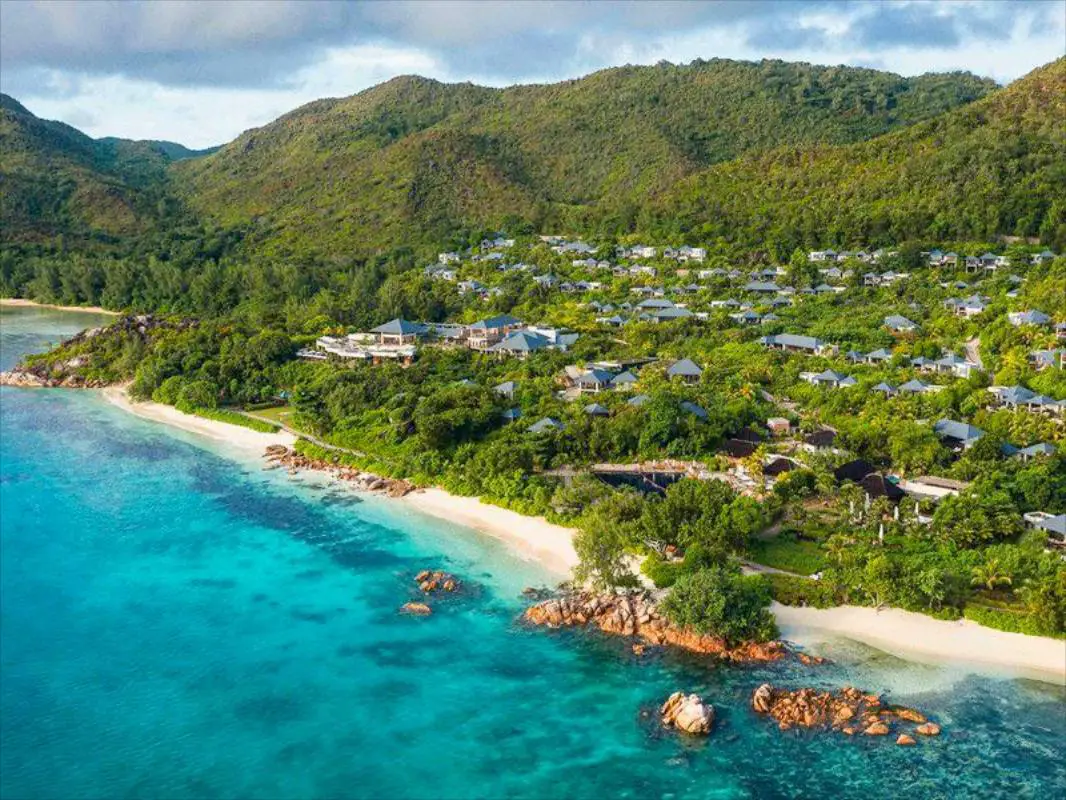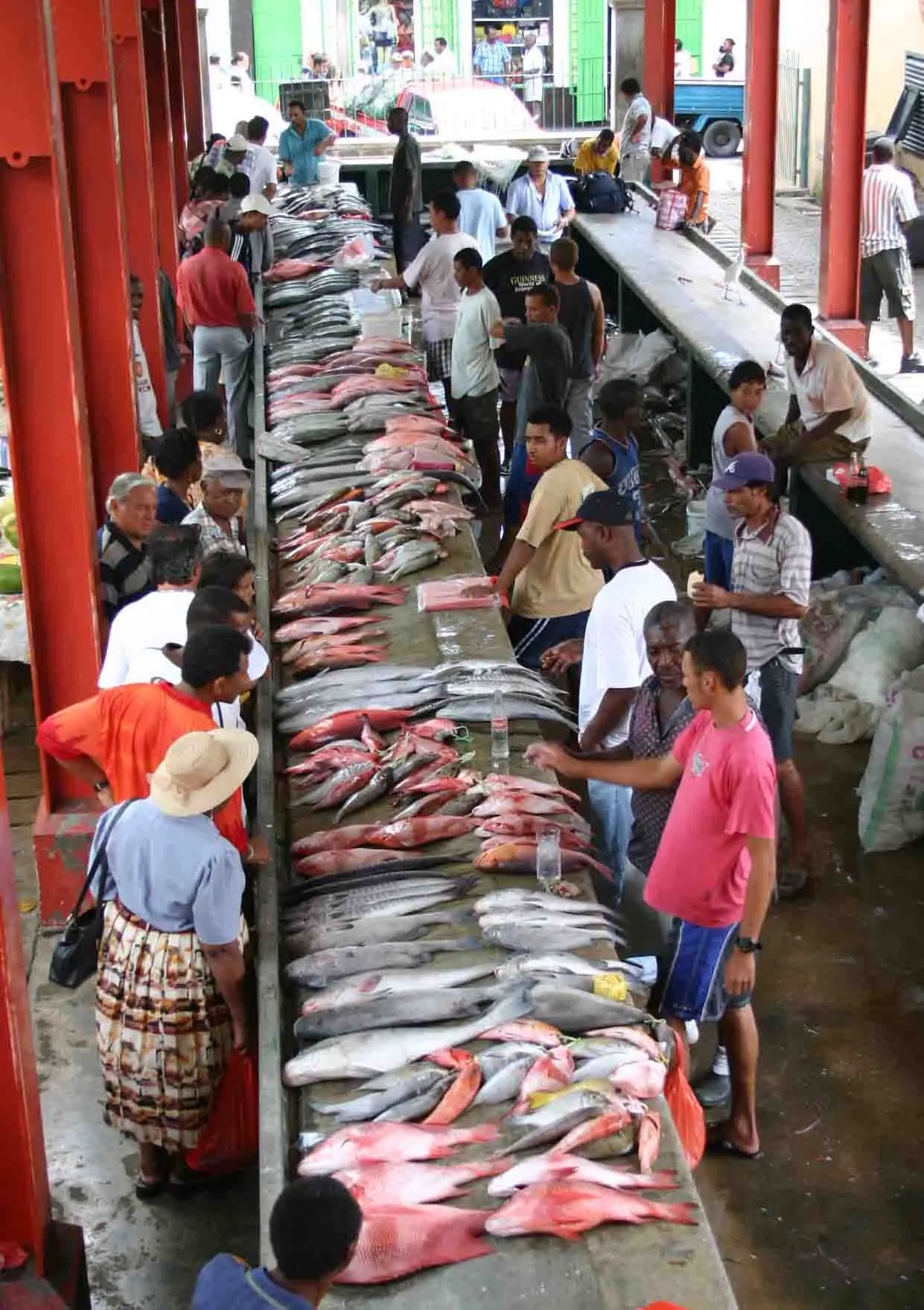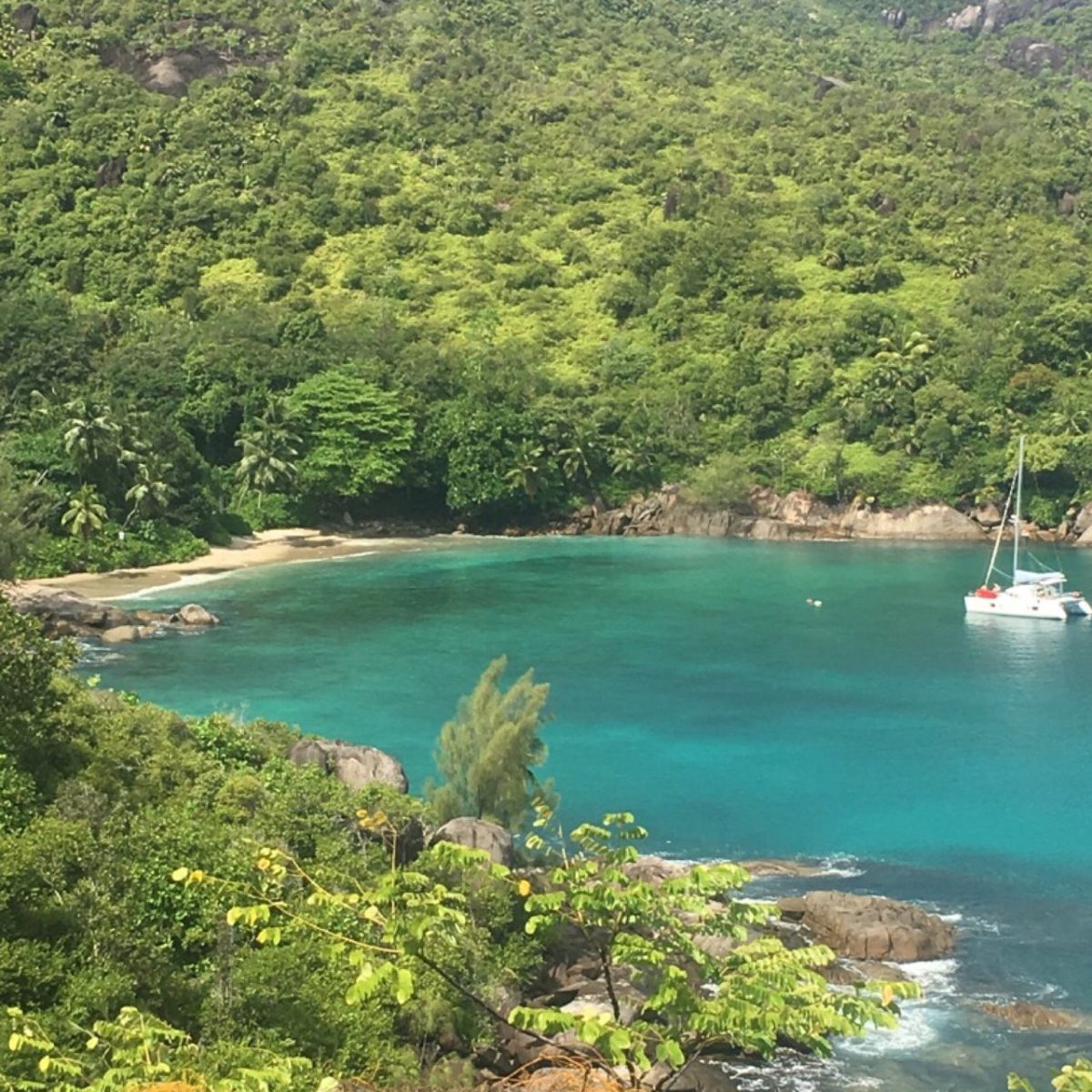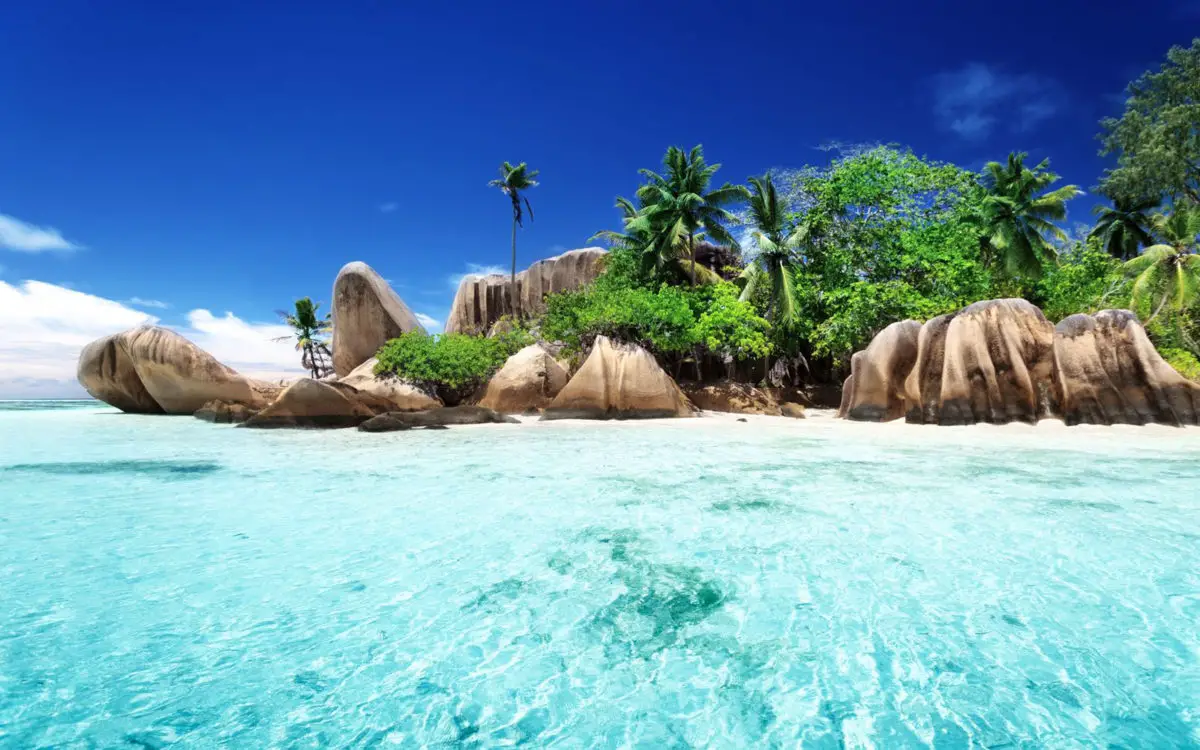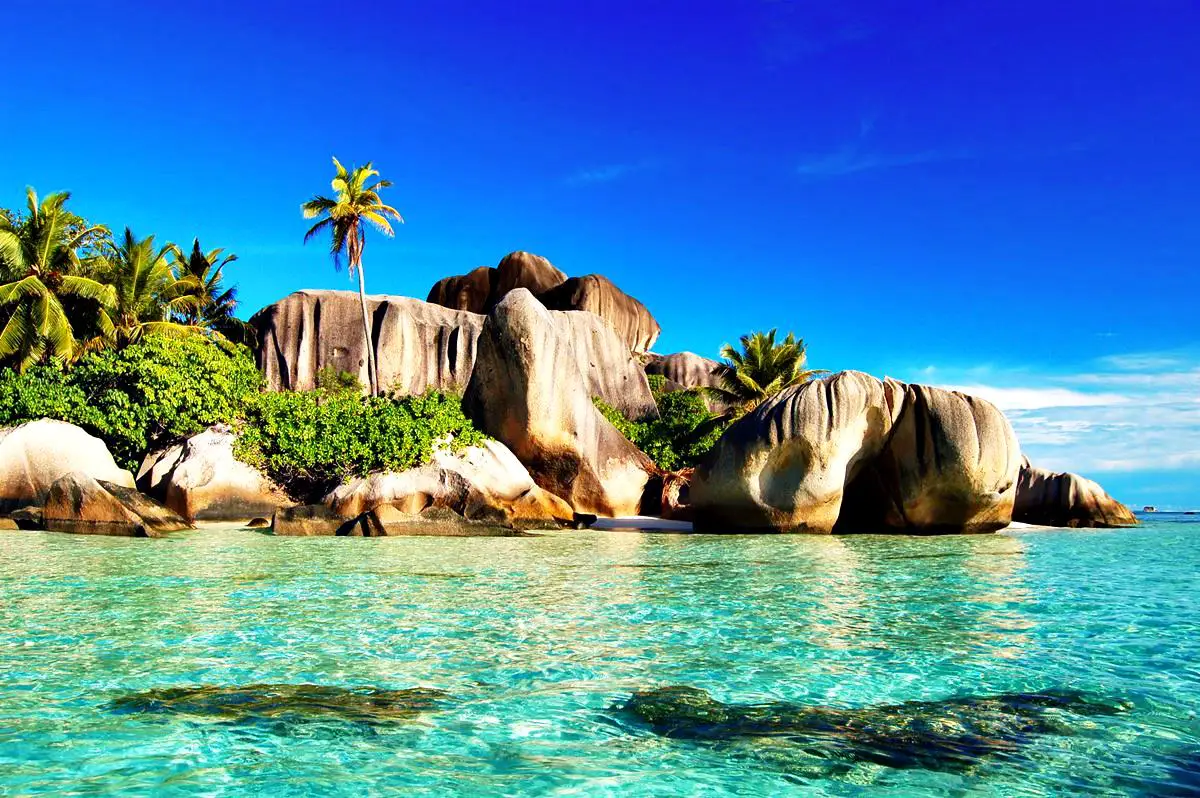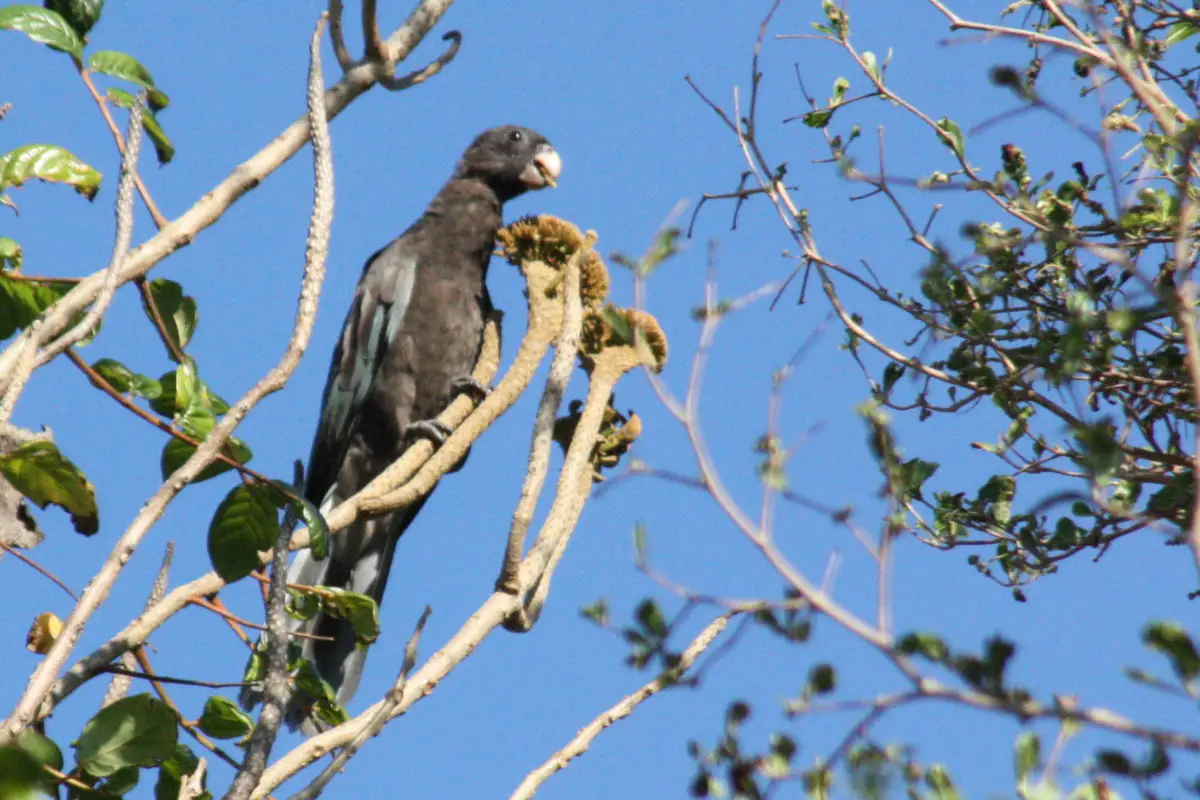The Seychelles Islands are considered to be the Garden of Eden on earth, in this special place you will find 1,500 kilometres of coastline, tropical forests, a mixture of cultures from its first settlers, a place where gastronomy is one of the characteristics of the eastern coast of the African continent and the Indian Ocean. We invite you to read this article where you will discover many details of this extraordinary place.
Indice De Contenido
Where are the Seychelles Islands?
The Seychelles islands are located in the Indian Ocean, north of Madagascar. It is an archipelago of 115 islands with a total area of 455 km2 and a population of 100,520 inhabitants; the official languages are Seychellois Creole, French and English.
The predominant population is Seychellois, descendants of Africans and French, with a minority of Chinese and Indians; the dominant religion is Catholicism, 9% are Anglicans, who profess Christian beliefs but are based in the Archbishopric of Canterbury in England rather than in the papal structures of the Vatican, and 2% profess other religions.
The Seychelles archipelago borders the African continent, with Somalia, Kenya, Tanzania, Comoros and Mozambique to the east.
The surface of the Seychelles islands is of granitic origin, a light-coloured igneous rock whose formation contains quartz, alkali feldspar and mica, and corals which are the remains of colonial animals, mostly of the class Anthozoa and Hydrozoa, called zooids; of the 115 islands, only 33 are inhabited.
Victoria, the capital
The city of Victoria is the capital of Seychelles and the only city in the archipelago, also known as Port Victoria and located on the island of Mahé, with a population density of 27,300 inhabitants, representing approximately 80% of the country’s total population, a port and an international airport.
The city is full of life and colour and well worth a few hours of sightseeing. Visit the Sir Selwyn Selwyn-Clarke Market, the Hindu Temple, the Clock Tower, the National History Museum of Victoria and the Botanical Gardens are just some of the things to do in this bustling city.
History of the islands
The first people to visit the Seychelles were Arab traders, and the first Europeans to set foot in the islands were the Portuguese in 1505 when they travelled to the Asian continent to trade goods. Pirates and privateers used the island as a depot for their goods. France took administrative possession of the island in 1756 through the actions of the Frenchman Nicolas Morphey, and it was at this time that the island was given its present name in honour of the then Minister of Finance, Jean Moreau de Séchelles, and became part of the French Company of the Western Isles.
In 1768, the French government sent settlers, slaves and labourers from Mauritius to develop agricultural activities and the island became an important agricultural centre with exports of coconut, sugar cane, cassava, coffee, tobacco, vanilla, pepper and cinnamon.
In 1778, French cartographer Charles de Romainville founded the colony of Mahé, which years later became the town of Victoria, the current capital of the Seychelles.
Under Napoleon Bonaparte, the Seychelles were chosen as a place to imprison political dissidents of his time.
After the war between France and England in 1810, the Seychelles were occupied by the British government and this position was later ratified by the Treaty of Paris of 1814-1816, which ended the war between France and the United Kingdom and was signed by both sides. The British government included the Seychelles among the countries of its empire and they became administratively dependent on Mauritius until 1903.
Slavery in the Seychelles was abolished in 1835 and the island received labour from all the neighbouring countries, but with a greater predominance of Indian labourers needed for agricultural production.
In 1903, the British government established the office of Governor and the islands became a colony, no longer dependent on Mauritius, but administratively dependent on London.
In 1976, after much negotiation, the Seychelles gained independence and became a republic and part of the Commonwealth, the organisation of the Commonwealth of Nations, which brings together sovereign countries that have common historical ties with the United Kingdom, with the aim of forming strategic alliances for the development of all member countries, the first constitutional President of the Seychelles was James Richard Marie Mancham.
In 1977, a Soviet-backed socialist coup brought France-Albert René to power and he ruled until April 2004. In 1979, a constitution was adopted which established the government of the Seychelles as a socialist republic and a single party was created until 1992. France-Albert René was succeeded by James Alix Michel, who was elected in 2004 and re-elected on 31 July 2006; the current President is Danny Faure.
Its islands
The Seychelles archipelago consists of 115 islands that can be visited at any time of the year, including the following
Mahé
The island of Mahé is the largest island with 155 km2, it is located in the north-east of the Seychelles archipelago, it has an estimated population of 72,000 inhabitants and its main town is Victoria, which is the capital of the Seychelles Islands, 90% of the country’s population live on the island of Mahé. The island is named after the Englishman Bertrand-François Mahé de La Bourdonnais – Comte de La Bourdonnais, administrator of the French East India Company and governor of Mauritius.
The island of Mahé has 100 kilometres of coastline with more than a dozen paradisiacal beaches of white sand and crystal clear waters that reflect the blue of the sky.
In the northwest of the island is the Morne Seychellois National Park, home to the island’s highest mountain at 905 metres. In the south and west are the Baie Ternay National Park and the Port Launay Marine National Park, ideal for hiking and exploring the island’s flora and fauna.
Silhouette Island
Silhouette Island is located 20km northwest of Mahé Island in the Seychelles archipelago. It is the third largest island in terms of area at 20 km2 and has an estimated population of 200 people living in the villages of Grand Barbe on the west coast and Anse Mondon and La Passe on the east coast, most of whom work in Somalia, which borders some of the Seychelles islands. Silhouette’s main settlement is La Passe. The island was named after the Frenchman Étienne de Silhouette, the finance minister of the French King Louis XV.
From the 19th century until the 1960s, the island was owned by the French Dauban family, who developed the agricultural activity on the island, they built a mausoleum where the remains of most of the family are buried, the architecture of this mausoleum is similar to that of the Église de la Madeleine – La Madeleine church in Place la Concorde in Paris, later this family sold the island to a French conglomerate. The Dauban family’s plantation house has been restored and turned into a museum containing many of the family’s possessions, such as agricultural materials and tools of the time.
Accessible only by helicopter or sea, it is an unspoilt island with beautiful palm-fringed beaches, accessible only to people with a lot of money. The Hilton Hotel is located there and offers quality services to those who wish to enjoy the best that nature has to offer.
The waters surrounding Silhouette Island were declared a National Marine Park in 1987 and the Silhouette National Park was created to protect 93% of its land mass, the place is considered a refuge for several endangered species such as the Seychelles tailed bat. The Island Conservation Society of the Seychelles is responsible for managing all conservation activities on the island.
Praslin Island
Praslin is the second largest island in the Seychelles archipelago, with an area of 38 km2. Located 44km north-east of Mahé, it has a population of approximately 6,500 and is divided into two administrative districts, Baie Sainte Anne and Grand’ Anse – Praslin.
Originally named Isle de Palmes by the French explorer Lazare Picault in 1744, the island was a refuge for pirates and Arab traders. In 1768 the name was changed to Praslin in honour of the French aristocrat César Gabriel de Choiseul, Duke of Praslin.
The island of Praslin has great tourist potential due to its beautiful beaches and good hotel infrastructure, tropical rainforests, the Mai Valley Nature Reserve where you can see the double coconut and vanilla orchids found only in this part of the Indian Ocean. It is said that the British general who was the colonial administrator of the Seychelles, Charles George Gordon, often referred to the Mai Valley as the Garden of Eden.
The island is served by Praslin Airport, the nearby islands of Curieuse, La Digue, Cousin, Cousine and Aride, and the islets of Round Island and Chauve Souri, the latter two of which have hotel infrastructure.
La Digue
The island of Digue lies to the east of Praslin and to the west of Felicité. It is the third most densely populated island with a population of 2,500 and an area of 10 km2, most of the population living in the villages of La Reunion and La Passe on the west coast. La Digue was named after the French explorer Marc-Joseph Marion du Fresne, who arrived on the island in 1768.
The island’s economy is based on agriculture in the coconut and vanilla growing areas, but there has been an upsurge in tourism due to its beautiful scenery and excellent beaches, including Anse Source d’Argent and Grand Anse, which has brought additional income to the Seychelles.
The island of La Digue has a considerable number of hotels and lodges, a variety of restaurants and a diving centre. Boat trips and diving activities can be arranged on the coral reefs.
The Veuve Nature Reserve, located in the interior of the island, is home to the Seychelles Monarch, which is considered an endangered species, and the highest mountain in the area is the Eagle’s Nest peak at 300 metres.
What activities can I do in Seychelles?
There are many natural, social, sporting and recreational activities that you can do in Seychelles, of which the following are the most important:
Malé Hindu Temple
This Hindu temple is a striking infrastructure in which the vibrant colours of red, blue and gold predominate, is the place of worship for 2.4% of the population, is open to the public every day from 7:00 am to 12:15 pm and from 5:00 pm to 8:15 pm and is located in the centre of the city of Victoria.
Victoria Market
The Victoria Market was built in 1840, it is located in the old town in the centre of the city of Victoria, it is also known as the Bazaar, it was renovated in June 1999, there you can find all the tropical fruits you can imagine, such as tamarind, pineapple, bananas, mangoes, pomegranates, among others, the scents of the species in the natural aroma of the place, in the market you will find fresh fish brought daily by the islanders fishermen.
It’s a very picturesque place that you can’t miss, especially on Saturday mornings, when you can have breakfast with typical local dishes and also learn a little more about the gastronomic culture of the region.
Bel Air Cemetery
In the town of Victoria is the Bel Air Cemetery, where you are greeted by a polished bronze plaque explaining that the cemetery was the resting place of the first French colonists, but legend has it that pirates who frightened the sailors who roamed the coasts of Seychelles are buried there, and legend also has it that the disorderly disposition of the graves indicates where the hidden treasures were.
One of the tombs is that of the famous pirate Jean François Hodoul, who was feared by English sailors, and the tomb of the Seychelles Giant, who is said to be three metres tall. There are tombstones and mausoleums dating from the 18th and 19th centuries.
The best beaches in Seychelles
All the beaches of Seychelles are considered to be tropical paradises, they have retained their original and natural beauty, here are some of these spectacular beaches:
Anse Major
The beach of Anse Major is located in the Morne Seychelles National Park, you have to walk for about an hour to get to the beach, on the way you can do hiking activities and at the same time enjoy the scenery of the park, when you get to the beach you will have the satisfaction of having found a place of extraordinary beauty, you will not find crowds of people there, it is a lonely place, so you should bring your snorkelling equipment, food and drink as there are no services of any kind. Water taxis run regularly along the shore to take you back to civilisation.
Anse Intendance
After a short walk through the forest you will find a spectacular unspoilt beach. Anse Intendance has 1.5km of fine white sand, there is little tourist infrastructure in the surrounding area, so the place has a wild natural feel, it is very popular for surfing activities, so not very suitable for swimming or snorkelling, the authorities are vigilant in placing coloured flags to indicate water and wind conditions.
Anse Soleil
Anse Soleil is a small but very beautiful beach located in a bay, it is close to Baie Lazare, it is easily accessible by car and has a car park, from there you have to go down a steep hill, its waters are calm, so it is an exceptional place for the family, you can snorkel because its waters are very clear, it has restaurant services, chairs and umbrellas.
Anse Lazio
Anse Lazio is located in the island of Praslin, it is a beautiful beach of white sand and crystalline waters, with 8 kilometres of coast, it is the ideal place to rest under the palm trees and listen to the soft waves breaking in the coast, also you can practice snorkelling, swimming or diving, in the place you have the services of restaurant directly at the border of the beach.
Anse Georgette
Anse Georgette beach is located in the northeast of Praslin Island, it has 1 kilometre of coastline with white sand and crystal clear waters, it is a great place for snorkelling, there are no restaurant facilities so it is advisable to bring your own food and drink supplies.
Anse Source Dargent
The beach of Anse Source Dargent, is located on the island of La Digue, to get there you have to go through the coconut plantation L’Union Estate, it is considered one of the best beaches in Seychelles, between eroded pink rocks and many palm trees are the crystal clear waters and white sand, its waters are not very deep so you can dive in its reef which is very close to the coast, is an extremely beautiful place that can be enjoyed with the family.
Features of the Seychelles
The islands of the Seychelles have some very special characteristics, here we will look at the climate, flora and fauna:
Climate
The warm season begins in early March and lasts until mid-May, with an average maximum temperature of 30°C and an average minimum temperature of 26°C. The highest temperature recorded is 31°C in early April.
The cool season begins in mid-June and lasts until the beginning of September, with an average maximum temperature of 26°C and an average minimum temperature of 25°C. The lowest temperature recorded is at the end of July, when it reaches 23°C.
The rainy season in Seychelles is scattered from mid-October to mid-March, with a maximum chance of rainfall in late December.
The driest season runs from mid-March to the end of October, with the lowest chance of rainfall in July.
The best months for sunshine are June to August.
Flora and Fauna
The flora and fauna of Seychelles is very rich and varied, due to the fact that the islands are located in the tropics and this makes the diversity even greater than in other areas.
Flora
Seychelles has 75 species of endemic plants, meaning that they are found only in this region, including
- The impatiens grass is critically endangered.
- The prickly plant Gordonii is found only on the islands of Mahé and Silhouette.
- The vanilla orchid.
- The coco de mer.
- The breadfruit tree.
- The Averrhoa Carambola tropical shrub.
Wildlife
There are 250 species of birds identified in Seychelles, 12 of which are endemic, 2,000 endemic species of invertebrates, more than 1,000 different species of marine fauna, some of these endemic specimens are mentioned below:
- Seychelles Giant Tortoise.
- Coleura seychellensis.
- The endangered Seychelles tailed bat.
- Sooglossidae frog.
- Schefflera procumbens.
- Seychelles kestrel.
- Seychelles Blue Pigeon.
- Seychelles black parrot, found only on Praslin island.
- The bird Acrocephalus seychellensis, recovered from the brink of extinction.
- The bird Copsychus sechellarum, recovered from the brink of extinction.
- The Seychelles monarch collared bird,
- The clownfish.
If you enjoyed this article, we invite you to visit the following links:
- Madeira Islands
- Barbados Island
- Laquedivas Island

